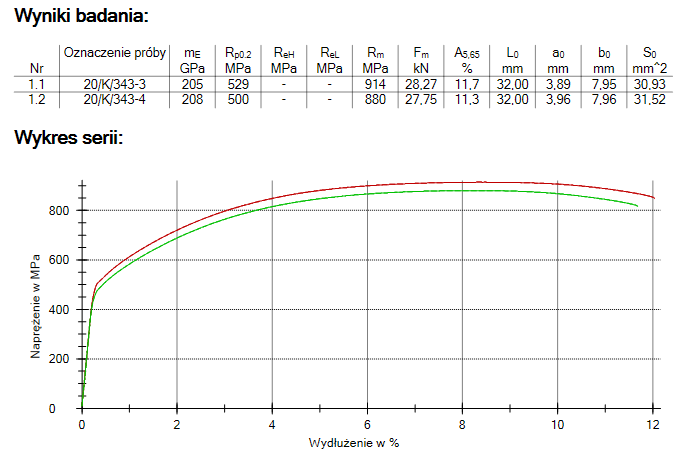The causes of the breakage of two components at the same time
Why has the failure occurred? And what got damaged first? These are frequently asked questions to which our clients want to know the answer. Especially when it comes to components from different suppliers.
One of our clients faced a similar problem. The tank mounting element in the truck, which was made of two components: a steel band and a steel sleeve, had a failure. Due to the limited budget, the Ordering Party asked us to submit an offer for tests absolutely necessary to determine the cause of the cracking. Our laboratory therefore offered the client a set of tests that was sufficient to find the answer to his questions.
The research began with the observation of the fracture, which allowed us to determine the nature of the crack and the initial cause of the fracture of the sleeve and the band. Further microscopic examination of the sleeve material, during which we revealed the presence of characteristic corrosion pits, confirmed our initial assumptions. The materials of both components were also analyzed by their chemical composition to check whether the material declared by the manufacturer is consistent with the actual state.
After analyzing all the test results, we found that the direct cause of the fracture of the fastening band was the fracture of the sleeve attached to it. On the other hand, the reason for the damage to the sleeve was one of the processes for the production of the surface protective layer carried out incorrectly. Our findings (and the prepared report) allowed our client to further discuss this matter with his external supplier.


Digital image. Visible fatigue fracture formed on the sleeve and several cracks indicated by arrows located at the outer surface of the sleeve
Digital image. Visible crack on the edge of the band (indicated by the arrow)
Stereoscopic image. Visible break point and fatigue zone with rest lines located at the outer surface of the sleeve
Microscopic image of the sleeve material. Visible numerous small corrosion pits
Microscopic image of the sleeve material. Visible crack propagating from the inside surface
Quality control of the detail made
In each production process, in order to check the finished product, it is necessary to perform appropriate laboratory tests.
An example is the cyclical order of testing forgings, which was aimed at controlling the chemical composition of the material and the appropriate selection of parameters.
The scope of the research included: chemical composition analysis and CEV carbon equivalent calculations, Brinell hardness measurements, strength tests. Based on the obtained results, compliance with the specification was assessed in accordance with ILAC-G8: 03/2009.
In the report we send to the client, we each time include detailed opinions and interpretations that allow for a better understanding of the problem. In this case, in addition to the basic interpretations of the test results, the report also includes an opinion on the chemical composition of the forging. We informed the client that high sulfur content may cause cracking of the detail during hot forging and heat treatment.
